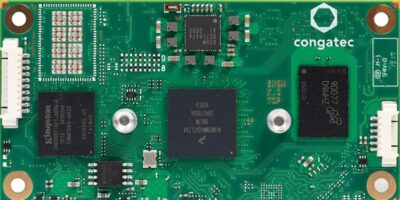‘Curiosity Lab at Peachtree Corners’ Grand Opening: Real-world smart city infrastructure and 5G connectivity enable companies to better test cloud AI, robots, autonomous vehicle tech and more
Sprint will headline the grand opening of Curiosity Lab at Peachtree Corners – the nation’s first 5G-powered smart city technology proving ground – on September 11 in the City of Peachtree Corners, Ga. The living laboratory, which includes a 1.5-mile autonomous test track located within an existing 500-acre technology park, enables companies to develop and test emerging technologies with live smart city infrastructure, next-generation connectivity and the most real-world conditions possible.
“We are honored to work with the city of Peachtree Corners to help enable new technologies. With Curiosity™ IoT and True Mobile 5G, Sprint is bringing together companies – both big and small – to develop and test future-forward technology in one space, sparking innovation and creativity like never before,” said Jan Geldmacher, president, Sprint Business. “From enabling the most accurate real-world navigation possible to delivering immediate intelligence from IoT connections, companies can now better test, and ultimately scale new solutions for the smart city landscapes of tomorrow.”
The grand opening ceremony will paint a vibrant illustration of emerging technologies that will come to life at Curiosity Lab at Peachtree Corners:
- Local Motors “Olli” Autonomous Passenger Shuttle
- CloudMinds: Humanlike service robot with artificial intelligence in the cloud – in addition to a virtual avatar used in retail, hospitality and various other environments
- Softbank Robotics “Little” Autonomous Floor Cleaner
- Autonodyne Autonomous Drone, Valqari Drone and “Mailbox” Landing Pad
- Georgia Power Smart Light Poles
- REEF KITCHENS Delivery-Only Kitchen Solution
- Kia Autonomous Vehicle
- And more…
Inspiring Curiosity™ at Smart City Expo – Atlanta
Sprint will also showcase its industry-leading Curiosity™ IoT at Smart City Expo, taking place September 11-13 at the Georgia World Congress Center in Atlanta, Ga. The expo showcases smart city and smart urban solutions, highlighting how A.I., IoT, big data and automation are redefining the future of cities everywhere.
- Ivo Rook, senior vice president, IoT and product development, will take the stage on September 11 alongside other panel participants to discuss “Intelligent Urban Infrastructure”. Patricia Watkins, vice president, IoT sales, can also be found sharing her expertise at the “Future of Transportation” on September 13.
- To experience a replica of Curiosity™ Lab at Peachtree Corners, visit the Sprint booth 400.
-
Curiosity™ IoT: connectivity engineered for IoT intelligence
The industry’s first dedicated, virtualized and distributed core network coupled with an operating system purpose-built for billions of connected devices.
- The groundbreaking offering allows companies to manage and secure IoT devices in ways never before seen.
- Curiosity’s OS is designed to generate invaluable business intelligence from massive amounts of IoT data.
- Connectivity agnostic: from LTE Advanced and 5G to LPWA Cat M network technology, Curiosity™ IoT allows devices to connect in whatever way necessary according to unique applications.
Sprint True Mobile 5G is now live in parts of Peachtree Corners as part of the company’s footprint covering areas of Atlanta with the next generation of wireless service that delivers blazing-fast download speeds.
For more information on the grand opening of Curiosity Lab at Peachtree Corners, to attend the ribbon cutting ceremony, or to set up an interview with a Sprint executive, please contact the Sprint Business corporate communications team at Sprint@GoDRIVEN360.com.
About Sprint
Sprint (NYSE: S) is a communications services company that creates more and better ways to connect its customers to the things they care about most. Sprint served 54.3 million connections as of June 30, 2019 and is widely recognized for developing, engineering and deploying innovative technologies, including the first wireless 4G service from a national carrier in the United States; leading no-contract brands including Virgin Mobile USA, Boost Mobile, and Assurance Wireless; instant national and international push-to-talk capabilities; and a global Tier 1 Internet backbone. Today, Sprint’s legacy of innovation and service continues with an increased investment to dramatically improve coverage, reliability, and speed across its nationwide network and commitment to launching a 5G mobile network in the U.S. You can learn more and visit Sprint at www.sprint.com or www.facebook.com/sprint and www.twitter.com/sprint.
About Curiosity Lab at Peachtree Corners
Curiosity Lab is a 5G-powered autonomous vehicle and smart city technology living laboratory located in Peachtree Corners, Ga. – a northern suburb of Atlanta. The centerpiece of the lab is a 1.5-mile test and demo track which provides a real-world environment to prove out emerging Internet of Things (IoT)/connected device technologies – from self-driving machines and services, cloud robotics to countless more applications that will redefine the way people live and businesses operate into the future. Additional infrastructure includes a network operations center, smart poles, DSRC units, dedicated fiber and a 25,000-square-foot technology incubator. Additional information can be found at www.curiositylabptc.com.





